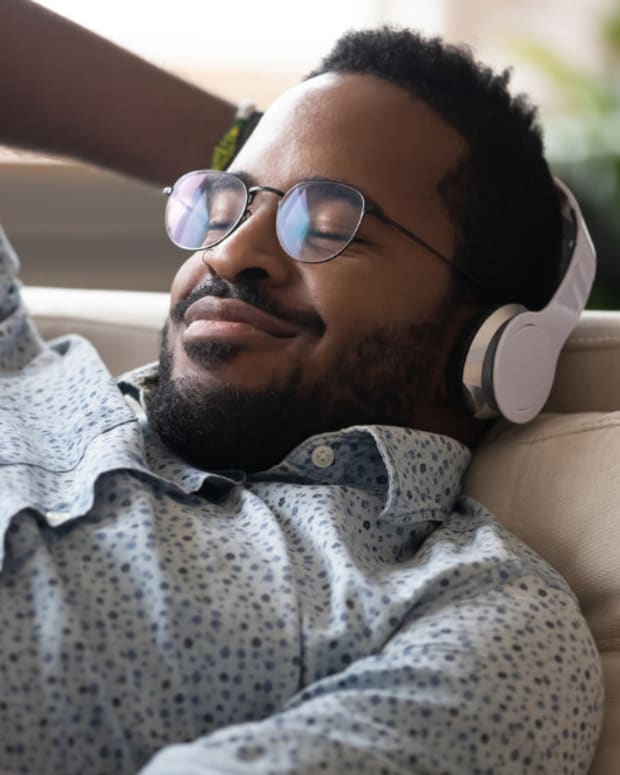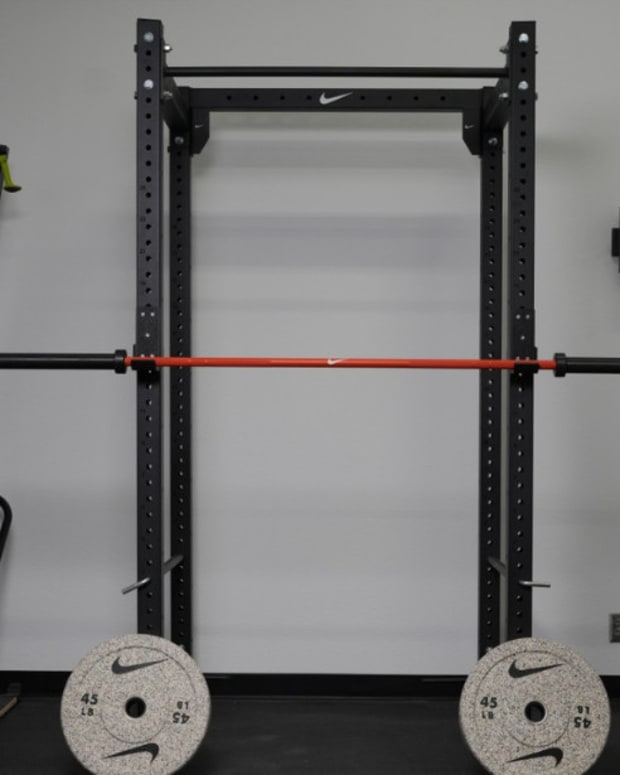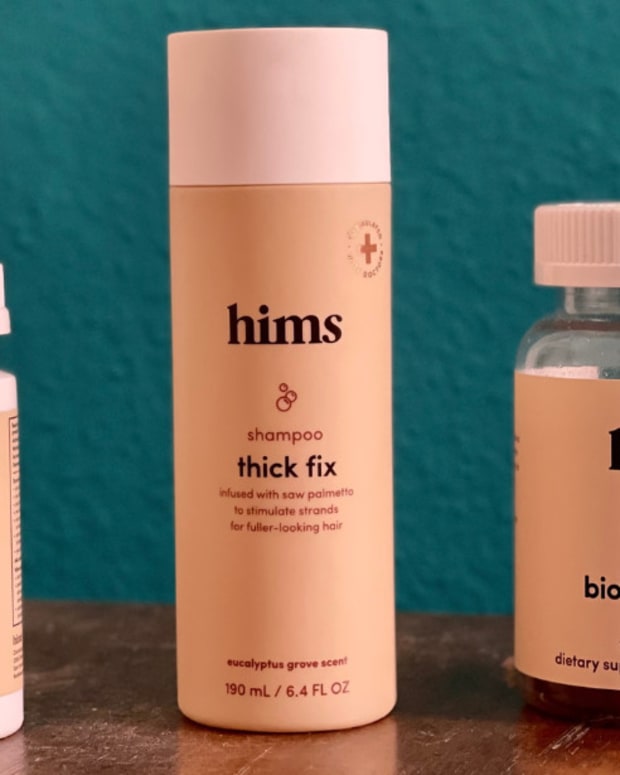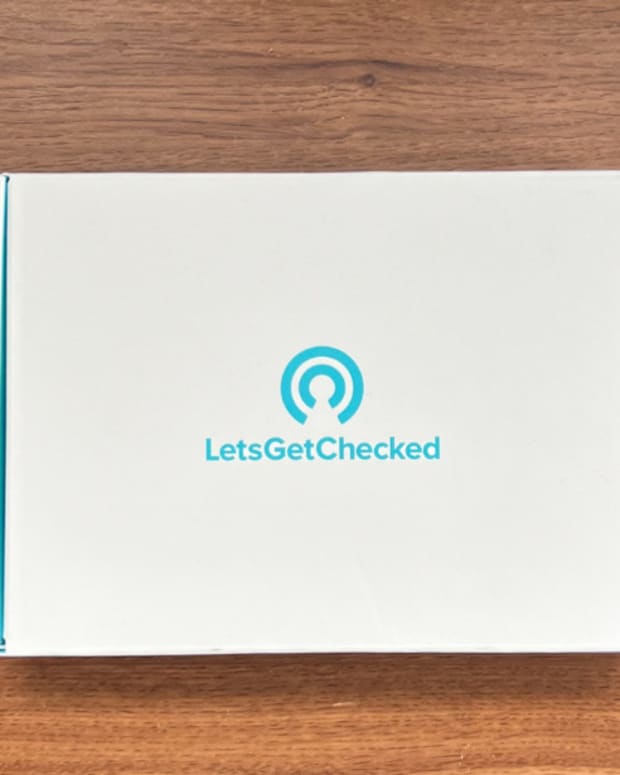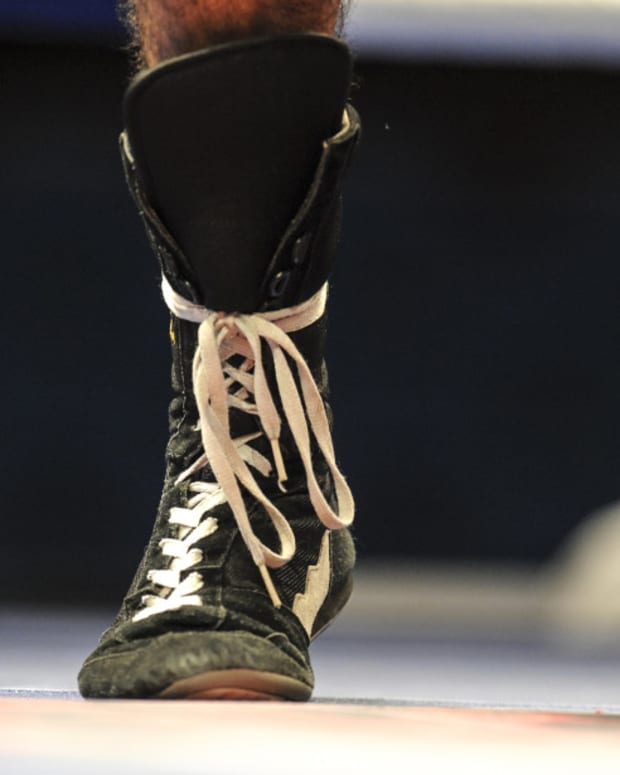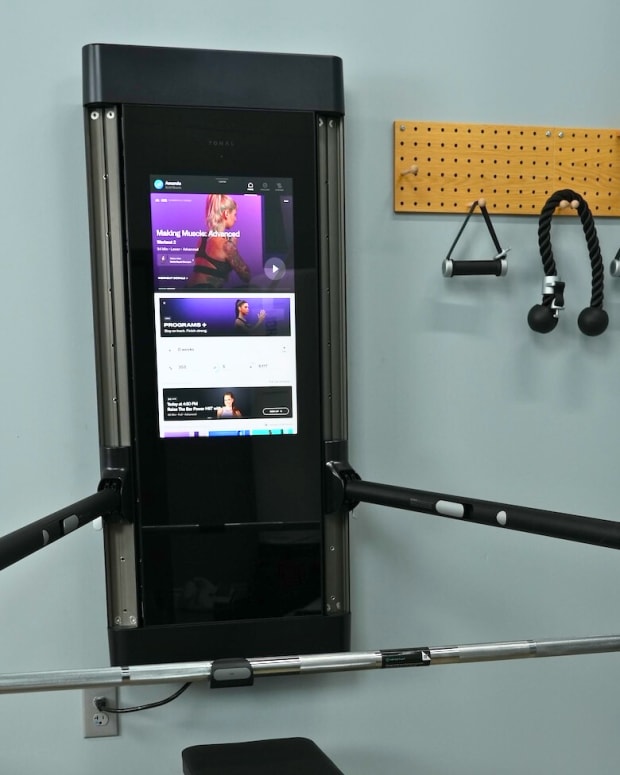The products featured in this article have been independently reviewed. When you buy something through the retail links on this page, we may earn commission at no cost to you, the reader. Sports Illustrated editorial staff are not involved in the creation of this content. Learn more here.
If you have ever suffered from running injuries like shin pain or plantar fasciitis, you know that these injuries can be nagging and even quite painful. Shin splints are often caused by factors including changing terrains, increasing mileage quickly or even improper, unsupportive footwear (which luckily is an easy fix).
While shoes alone aren’t going to prevent or cure any injury (you’ll also need to ensure you’re keeping up with strength training and recovery), the right shoe can help support you for successful miles. To help you get started on the right foot, we gathered up popular models that fit a range of criteria for all different runners that may be suffering from the dreaded shin issues. We chose options for arch support, cushioned running shoes, picks for narrow and wide feet and shoes that can handle your toughest training on any terrain. Read on for our picks for the best running shoes for shin splints, plus a guide on how to choose the right shoes for you.
Looking for more options? Check out our top picks for the best running shoes overall.
Our Picks for the Best Running Shoes for Shin Splints:
- Best Hoka Running Shoes for Shin Splints: Hoka Clifton 9
- Best Women’s Running Shoes for Shin Splints: Nike Vomero 17
- Best Lightweight Running Shoes for Shin Splints: adidas Adizero Adios 8
- Best Barefoot Running Shoes for Shin Splints: Xero HFS II
- Best Sustainable Running Shoes for Shin Splints: Allbirds Tree Flyers 2
- Best Running Shoes for Shin Splints and Flat Feet: Nike Pegasus 40
- Best Trail Running Shoes for Shin Splits: Kuru Atom Trail
- Best Cushioned Running Shoes for Shin Splints: Nike Invincible 3
- Best adidas Running Shoes for Shin Splints: adidas Ultraboost Light
- Best Asics Running Shoes for Shin Splints: Asics Gel-Kayano Lite 3
Best Hoka Running Shoes for Shin Splints: Hoka Clifton 9
Key Features:
- Price: $145
- Drop: 5 millimeters
- Type: Neutral
- Cushioning: Mid to high cushion
Hokas are a super popular choice for people that suffer from shin splints and for good reason. They use a thick piece of EVA foam for the midsole of the shoe which gives it a pillowy, marshmallowy feel while also being incredibly effective at shock absorption. The incredibly comfortable shoe also features a meta rocker which helps to promote efficient running by encouraging a heel-to-toe roll through with each step—this also help to distribute shock more evenly instead of shooting straight up the leg like it would in a flat footfall. The rocker also works particularly well for those that have flat feet as they don’t have a ton of arch flexion.
Despite their hefty appearance, Hokas are also very light which makes them a great everyday trainer as they perform well in everything from long runs to speedwork. They are also known for their bright and unusual color combinations, so while you can always go with a classic black and white, they also have some more vibrant colorways to consider.
Pros:
- Lightweight but cushioned
- Great shock absorption
- More affordable than other higher cushion shoes
Cons:
- Some people have issues with the arch
Best Women’s Running Shoes for Shin Splints: Nike Vomero 17
Key Features:
- Price: $160
- Drop: 10 millimeters
- Type: Neutral
- Cushioning: High cushion
Shoes with lots of cushioning to help absorb shock are the best option for training in comfort when you’re suffering from shin splints, which is why we chose the Nike Vomero 17s as our top pick for women. These springy shoes boast tons of plush cushioning through the midsole and heel, helping to reduce impact—and the jarring feeling when you step on sidewalks or pavement.
The neutral design makes it ideal for forefoot and heel strikers, and suitable for long or short runs, so no matter how you stride, this shoe should help you do so in comfort. The outsoles are made with high-abrasion rubber and have lugs to boost traction and the lightweight construction (8.5 ounces for a women’s size 8) keeps the strain on your feet and shins minimal.
Pros:
- Available in regular and extra wide
- Ideal for any type of mileage
- Designed for added responsiveness
- Seven colorways, including a vibrant ombré design as part of Nike’s Bloom Run collection
Cons:
- Doesn’t offer much stability for those who overpronate
Best Lightweight Running Shoes for Shin Splints: adidas Adizero Adios 8
Key Features:
- Price: $130
- Drop: 8 millimeters
- Type: Neutral
- Cushioning: Minimal
The adidas Adizero Adios 8 is an update on the Adizero Adios line that features a blend of Lightstrike 2.0 and Lightstrike Pro foams. According to adidas, this blended foam gives the Adios 8 its lightweight and durability. These shoes also have EnergyTorsion Rod 2.0 in the midsole, providing a support system that also returns energy from your stride.
These adidas running shoes are great for racing, speedwork and tempos. They use adidas’ Lightstrike 2.0 foam paired with the Torsionrod system which gives them a snappy feel without being firm. These are a great option if you are looking for a shoe that you can use for both training and racing as it’s able to give you a super-responsive feel without being as aggressive as a carbon-plated racer, or as clunky as an everyday trainer.
Pros:
- Very lightweight but supportive running shoe
- Uses a proprietary foam blend in the midsole for stability
- Reviewers say the fit is snug
Cons:
- Minimal cushioning
Best Barefoot Running Shoes for Shin Splints: Xero HFS II
Key Features:
- Price: $130
- Drop: None
- Type: Barefoot
- Cushioning: Minimal
To be clear, no shoe can magically prevent a shin splint if the cause is overdoing it—in that case, your only solution is allowing adequate time to recover. However, if your problems stem from weak feet, it might surprise you that barefoot shoes offer a potential solution: Studies show that wearing barefoot shoes are an effective tool to strengthen the feet.
But you don’t want just any barefoot shoe, you’ll want the best barefoot shoe, and the HFS II are one of the most popular models from Xero, which deals exclucisively in minimalist footwear. What sets the HFS II apart from other Xero shoes is how the HFS II are oriented to optimizing athletic performance. That’s according to feedback from our team’s tester, who is a big advocate of the barefoot shoe lifestyle. He adds that the design of the shoe cradles the foot to provide enough support to keep the foot secure, while still lending that trademark “naked” feeling of a bare foot. The shoe comes in three colors: a bright blue, a purple-grey and dark black.
Pros:
- Very flexible sole
- Wide toe box to allow relaxed feet
Cons:
- Not enough stability for severe overpronators
Best Sustainable Running Shoes for Shin Splints: Allbirds Tree Flyers 2
Key Features:
- Price: $160
- Drop: 8.5 millimeters
- Type: Neutral
- Cushioning: Mid-cushion
Though Allbirds first entered the scene as a casual shoe company, they have since branched out into the world of running. The Tree Flyers 2 are their lightweight, responsive model that is great for those that prefer a more minimal shoe, or those that are looking for a lighter-weight option for speedwork and workouts. They have a unique geometric sole that is designed to add stability underfoot, and zonal traction rubber tread that gives you the best grip on all surfaces while still managing to cut down weight. While they don’t have a ton of cushioning, the stability under the foot exceeds that of other lightweight models, so this is a great option for those coming back from shin splints and getting back into speed work.
These shoes are also designed with sustainability in mind. They are made with a majority plant-based materials like a eucalyptus fiber upper, bio-based Pebax midsole, and a natural rubber outsole. It also makes use of recycled materials, and as a whole, the business is carbon neutral.
Pros:
- Sustainably made
- Stable midsole
- Breathable upper
Cons:
- Not super cushioned
Best Running Shoes for Shin Splints and Flat Feet: Nike Pegasus 40
Key Features:
- Price: $130
- Drop: 10 millimeters
- Type: Neutral
- Cushioning: Mid-cushion
The Nike Pegasus has been around for four decades now, which means they must be doing something right. And while they have definitely seen their fair share of changes in design and technology, they have kept the idea of the shoe true to what people have come to know it for. It is both light and cushioned, soft but responsive, and makes a great all around training shoe, taking you effortlessly from long run to track work.
Now since this is a very neutral shoe, it won’t work for everyone, but if your issue with shin splints is that you are coming from an overused or ill-fitting shoe, this could be a great option for you. Along with the plush Nike React foam, this shoe also features two air pockets—one in the toe and one in the heel—which help to give you that bouncy feel as well as shock absorb, and increase turnover on hard surfaces which can help prevent fatigue and stress.
Pros:
- Pretty affordable
- Upper supports arch
- Responsive yet cushioned
- Classic design
Cons:
- Very neutral shoe—not right for you if you pronate at all
Best Trail Running Shoes for Shin Splints: Kuru Atom Trail
Key Features:
- Price: $160
- Drop: 8 millimeters
- Type: Neutral
- Cushioning: Mid-cushion
If you are going to be hitting the trails and are suffering from shin splints, you want a shoe that is going to be super grippy, and supportive. Luckily when you are on softer grounds like dirt, grass and cinders, you don’t have to worry quite as much about the cushion of your shoe—rather you want to focus on grip and stability which will help prevent any torquing of your lower leg muscles which can exacerbate lower leg issues like shin splints.
Kuru’s Atom Trail, a rugged version of its signature Atom shoe, is a trail runner with an incredibly grippy lugged rubber sole that is designed to give you a stable foothold in everything from muddy to uneven surfaces. It also features Kuru’s signature “Kurusole,” which cups the heel and supports the natural arch of your foot. The moderate cushioning is more than enough to keep your legs feeling fresh on the trails.
The shoe is also highly versatile, with a classic look that seamlessly transitions from the back country to the city as needed. Our main qualm is the price point, which is a tad on the higher side, but you’ll be getting a rugged, waterproof shoe with solid support.
Pros:
- Grippy sole provides excellent traction
- Wide fit available
- Waterproof with TPU membrane
Cons:
- On the pricier side
Best Cushioned Running Shoes for Shin Splints: Nike Invincible 3
Key Features:
- Price: $180
- Drop: 9 millimeters
- Type: Mild stability
- Cushioning: High cushion
The Nike Invincible 3 is one of the more recent categories of shoes that isn’t neutral, but is also not a traditional stability shoe. It uses a midsole design that flares in the toe and heel of the shoe to give more stability without changing the way the arch falls in the shoe. This is also an incredibly high-cushioned shoe, but not only does it have a ton of cushion, but it also uses some slightly firmer foam on the front and inside of the shoe which helps to prevent overpronation while also helping the shoe to feel responsive and not too soft.
The main cushioning of this Nike running shoe comes from the Zoom X foam which is the foam used in most of their racing shoes. It is both incredibly light as well as responsive, so while this shoe feels soft and squishy when standing, it actually also has excellent energy return.
Pros:
- Works for all arch types
- Comfortable but responsive
- High cushion helps to prevent future shin splints
Cons:
- May be too narrow for some
- One of the more expensive options
Best adidas Running Shoes for Shin Splints: adidas Ultraboost Light
Key Features:
- Price: $190
- Drop: 10 millimeters
- Type: Neutral
- Cushioning: Medium
The adidas Ultraboost Light has become a favorite running shoe of Cory Kessler, NASM-CPT, for several different reasons. He loves that the shoes light weight doesn’t compromise comfort and structure. There may be lighter running shoes than the Ultraboost (10.4 ounces for a men’s size 9), but this shoe has a responsive, comfortable cushion in the midsole. It is also durable thanks to adidas’ PrimeKnit upper and Continental (yes, just like the tires) rubber outsole.
The lace closures on the Ultraboost are also well-placed to secure the midfoot and lower ankle—a feature runners with narrow feet will appreciate.
“If you’ve had shin splints before, are prone to shin splints or want to avoid shin splints going forward, the adidas Ultraboost has a nice balance of comfort and support that takes the pressure off your shins and knee joints,” Kessler says.
Pros:
- Comfortable but supportive
- Durable materials that can handle frequent road or treadmill running
- Stylish enough to wear in a casual setting
Cons:
- Expensive at $190 compared with a range of $130–$140 for comparable shoes from other brands
Best Asics Running Shoes for Shin Splints: Asics Gel-Kayano Lite 3
Key Features:
- Price: $160
- Drop: 8 millimeters
- Type: stability
- Cushioning: High cushion
If you are someone that needs both high support and high cushion, the Gel-Kayano is a classic that has been a favorite of runners for generations. This most recent version has almost all the cushion and support of the original Kayano, wrapped up in a lightweight package. These shoes are super soft, so if you like a really squishy feel, this could be a great fit for you. But despite their softness, they also offer a great amount of support which makes them a great option for distance runners.
This shoe uses Asics’ Guidance Line technology which is designed to guide the foot into proper alignment rather than force it over. It also uses a combination of lightweight Flytefoam and gel cushioning to give you extra cushion where you need it most without weighing down the shoe.
Pros:
- Very supportive
- Super soft
- Great for long distances
Cons:
- A bit pricey
Do Shoes Make a Difference in Shin Splints?
The right pair of shoes can make a huge difference when it comes to shin splints. While it’s not an instant fix, it can be a step in the right direction to healing the splints you already have while also working to prevent future ones.
If you are wearing improperly fitting shoes, or perhaps have just been overtraining without the proper footwear, it is easy to get yourself in a hole with shin splints. And if it is the shoes that caused the problem, you probably won’t be able to fix it without investing in a better pair.
What To Look For Running Shoes for Shin Splints
There are three main areas that you will want to consider that will make the biggest difference when it comes to helping and preventing shin splints.
Cushion: If you have shin splints, a high cushion is going to be your best friend. Shoes with more cushion will allow you to run on harder surfaces for longer miles without feeling as much of the effect of stress and impact force. This can also help prevent that tenderness in the shins while recovering from shin splints.
Support: If you are a severe overpronator and are dealing with shin splints, there’s a good chance that you do not have enough support. This causes your ankles, knees, and hips to be misaligned which can also be the cause or exacerbation of shin splints. The best way to correct this is with a supportive shoe or insole.
Fit: Believe it or not, fit is arguably the most important aspect to consider when buying a new pair of shoes. If your shoes are too big it can cause them to slide around, and not provide proper support, and if they are too small, you will have crunching of the toes which can cause foot issues as well as affect your running form.
A properly fitting shoe will have a close but comfortable fit on the sides of the foot, half to a thumbs width of room from the toe to the front of the shoe, and no slippage in the heel.
How To Prevent Shin Splints
While getting yourself in a proper pair of running shoes is a great start to preventing shin splints, there are a couple of other things you can do as well.
For a quick fix, you can invest in a pair of compression sleeves or socks. These help to increase circulation, and help you to recover faster. If you wear them while you run, they can also help to increase muscle efficiency and improve muscular endurance. And if you are already suffering from some painful shin splints, these can also help to relieve pain while you get back into running.
In the long run, the best thing you can do is strength train. Focus on exercises that strengthen the hips and lower legs as a weakness in one or both sides can cause you to compensate, or just run in an inefficient way that leads to injury. Some of the best exercises are calf raises and stretches, clam shells, and sitting single-leg raises.
If you do find yourself with shin pain or shin splints, it’s important to rest and recover. Many runners may try to tolerate the pain and continue without changes, especially if they are training for a big race but this can lead to bigger problems down the road like chronic shin pain or even a stress fracture.
How We Chose the Best Running Shoes for Shin Splints
To choose the best running shoes for shin splints, we considered some of the best and most popular running shoes on the market. We then looked for models that fit a range of benefits for different types of runners suffering from shin splints, and gathered up models that fit all different running types, budgets and preferences to come up with these eight. We also looked to reviews left by people that purchase and wore these shoes in real life to see how the performed in the real world, and used our own experience testing and reviewing running gear to come up with the eight best running shoes for shin splints for 2024.
Running Shoes for Shin Splints FAQs
Is it O.K. to run through shin splints?
Many runners will run through shin splints, but often it will only exacerbate the problem. The best way to heal up quickly and not cause further injury is to pause your running and opt for a low-impact workout that doesn’t make your splints feel worse.
Do softer running shoes cause shin splints?
Softer running shoes are actually helpful for shin splints. A higher cushion shoe is best as it helps to shock absorb as you run.
Do your legs get stronger after shin splints?
While shin splints themselves won’t make your legs stronger, the exercises used to combat them will.
Do stronger calves prevent shin splints?
Yes, stronger calves can help to prevent shin splints—it also helps to focus on strengthening your hips, and upper legs as well as imbalanced muscles can also contribute to shin splints.
Will insoles stop shin splints?
If you are a severe overpronator, insoles may be the answer. While they won’t work for everyone, they are a great option if your shin splints are stemming from a collapsing arch. Working with a podiatrist can help you find the right solution for your needs.
Final Thoughts
A new pair of shoes won’t immediate fix for those that are suffering from shin splints—you’ll also need rest and recovery, but investing in a new pair of shoes can go a long way in preventing further injury. Though we do always recommend seeing a physical therapist or podiatrist for nagging injuries, when used alongside proper training and inclusion of intentional strength exercises, a proper pair of running shoes can make a huge difference in health and injury prevention.
Prices are accurate and items in stock as of publish time.













